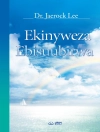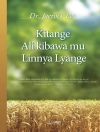Winner, 2024 Book Award, Dharma Academy of North America
The Bhagavad Gītā is one of the treasures of world culture. Sacred in India, and beloved to hundreds of millions throughout the centuries and around the world, it is the best-known of all Sanskrit works in the West. There has been sustained interest in the Bhagavad Gītā for several centuries in the Anglophone world, and well over one hundred complete English translations have been published.
This book presents the first comprehensive and accessible concordance of the Bhagavad Gītā. The concordance lists every word of the original, noting all its locations and instances within the text, along with related words. It is accompanied by various supportive references, including Sanskrit and English indexes. The concordance can be linked with any translation, giving readers in-depth access to the Sanskrit text.
This book is designed for those with little or no knowledge of Sanskrit as well as those familiar with the original text. It allows readers to gain a greater reach into the Bhagavad Gītā and achieve a deeper understanding of its ideas, facilitating nuanced analyses of the text and its language. It is an essential reference for scholars, teachers, students, and other readers interested in India’s spiritual classics.
Inhoudsopgave
Preface
Introduction: How to Use This Reference
1. Concordance
2. Families of Sanskrit Words
3. Word Indexes
4. The Transliterated Sanskrit Text
5. English Outline of 108 Gītā Themes
Appendix I: Details on the Concordance
Appendix II : Details on the Sanskrit Families
Appendix III : Details on the Word Indexes
Selected Bibliography
Over de auteur
Graham M. Schweig is professor and director of studies in religion at Christopher Newport University as well as distinguished teaching and research faculty at the Center for Dharma Studies at the Graduate Theological Union, Berkeley. He is the translator of
Bhagavad Gītā: The Beloved Lord’s Secret Love Song (2007) and the author of
Dance of Divine Love: India’s Classic Sacred Love Story: The Rāsa Līlā of Krishna (2005), among numerous other publications.







![Hoes van Brian Schrag & Julisa Rowe: Community Arts for God's Purposes [Chinese] 貼近神心意的社群藝術 Hoes van Brian Schrag & Julisa Rowe: Community Arts for God's Purposes [Chinese] 貼近神心意的社群藝術](https://static.worldofdigitals.com/thumb_webp/740/9781645083740.webp)




